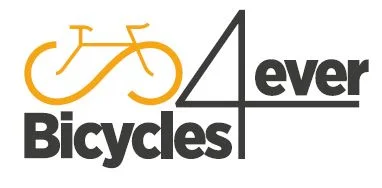Could This Simple Hack Change Your Cycling: Q Factors Explained! with GCN
Source: GCN Youtube Channel: Could This Simple Hack Change Your Cycling: Q Factors Explained!
Video Could This Simple Hack Change Your Cycling: Q Factors Explained! with Global Cycling Network
Video Could This Simple Hack Change Your Cycling: Q Factors Explained! with Global Cycling Network YouTube Channel.
Could This Simple Hack Change Your Cycling: Q Factors Explained!
Global Cycling Network: Exploring the Impact of Q Factor on Your Bike Fit
As cyclists, we often focus on various aspects of our bike fit, from saddle height to handlebar position. However, one detail that is often overlooked is the Q factor. Q factor refers to the lateral distance between the outside of one crank to the other, typically ranging from 150 to 170 mm depending on the group set being used. While stance width, the distance between your feet when on the pedals, is related to Q factor, it is much easier to change. By switching out pedals to those with different length spindles, using spacers, or adjusting cleat positions, you can easily alter your stance width on the bike.
Recently, there has been a growing interest in the impact of Q factor on riding comfort and power transfer. Switching to longer spindle pedals, such as those from Woo, can lead to noticeable improvements in comfort and power transfer. This has led many cyclists to reconsider the importance of Q factor in their riding experience.
While scientific research on the topic of Q factor is limited, a study from the University of Birmingham in 2014 found that narrow Q factors actually improved mechanical efficiency in riders. However, this study only looked at a single steady-state effort and did not consider the impact on power output at different intensities or over longer durations. Pro riders like Bradley Wiggins and Mark Cavendish have been known to use wider pedals, demonstrating that there is no one-size-fits-all approach to Q factor.
One reason for using a narrow Q factor is aerodynamics, as bringing your feet closer to the bottom bracket can create a narrower profile to cut through the air and potentially ride faster. However, comfort and power transfer should also be prioritized, as a narrow Q factor may not be suitable for everyone.
To delve deeper into the topic, I reached out to bike fitter Phil Burt, a former physio for Team Sky and British Cycling. Phil highlighted the importance of stance width, particularly for riders with wide hips, as it can impact Q angle and lead to knee irritation and saddle discomfort. Recognizing the biomechanical differences in individuals can help determine if a change in stance width is needed.
If you are considering adjusting your stance width, starting with small changes like altering cleat positions or adding spacers to your pedals can be beneficial. Swapping to longer spindle pedals from brands like Shimano, Wahoo, or Crank Brothers can also make a significant difference in your riding experience. It’s important to make gradual changes and assess how they feel before making further adjustments.
In conclusion, Q factor plays a vital role in your riding comfort and performance. While it may be overlooked, paying attention to your stance width and making necessary adjustments can improve your overall riding experience. Experimenting with different pedal lengths and finding the right fit for your biomechanics can lead to enhanced comfort, power transfer, and aerodynamics on the bike. Remember to prioritize comfort and gradual changes to optimize your riding setup.
The opinions expressed in this space are the sole responsibility of the YouTube Channel Global Cycling Network and do not necessarily represent the views of CicloNews.

